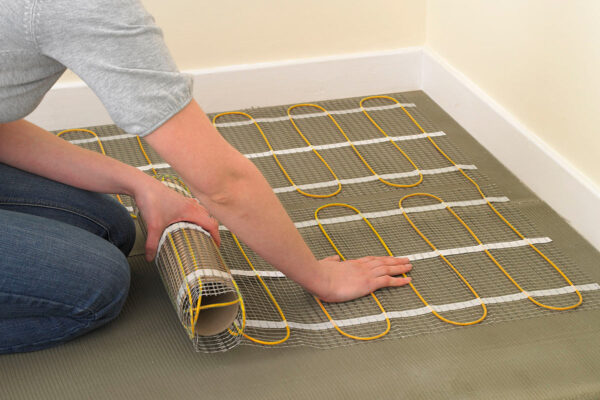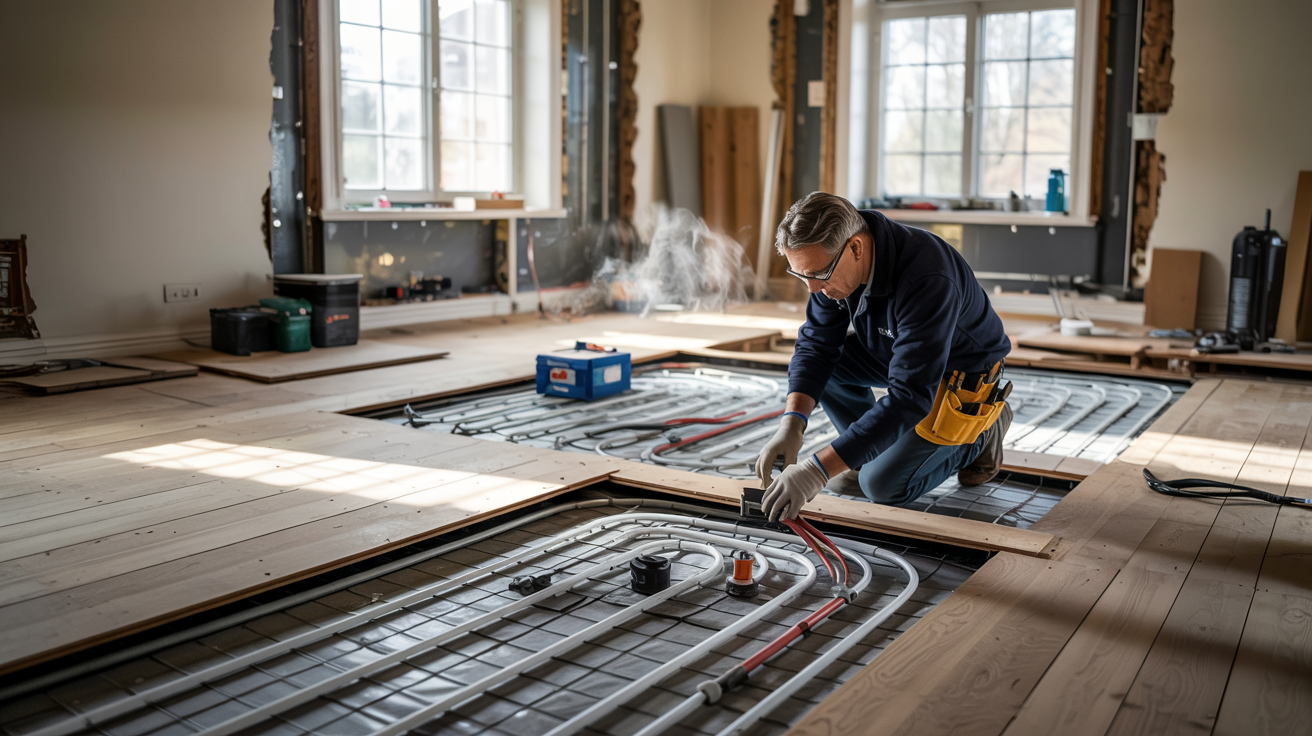If you’re considering a home upgrade, retrofitting underfloor heating might be the solution you need. It offers improved comfort and energy efficiency, making your space feel cozy without driving up your bills.
But before you jump in, it’s crucial to understand the different systems available and what installation entails. Let’s explore the key aspects to guarantee you make an informed decision that suits your home perfectly.
Understanding Underfloor Heating Systems
When you think about creating a cozy home, understanding underfloor heating systems is essential. These systems provide an efficient way to heat your space, ensuring that warmth radiates evenly from the floor up.
Unlike traditional heating methods, underfloor heating promotes excellent heat distribution, eliminating cold spots and maintaining a comfortable environment throughout your home.
You’ll find two main types: electric and hydronic systems. Electric systems use heating cables, while hydronic systems circulate warm water through pipes.
Each has its benefits, but system efficiency is key. By optimizing the setup, you can lower energy bills and reduce environmental impact.
Knowing how these systems work will help you make informed choices for your cozy sanctuary.
Benefits of Retrofitting Underfloor Heating

Retrofitting underfloor heating can transform your home into a more comfortable and energy-efficient space.
You’ll notice an immediate improvement in warmth, as this system provides even heat distribution, eliminating cold spots.
With better energy efficiency, you’ll often find that your heating bills decrease, leading to significant cost savings over time.
Additionally, underfloor heating runs at lower temperatures than traditional radiators, allowing your home to feel cozy while using less energy.
This sustainable option not only enhances comfort but also increases your property value.
Also Consider The Following Benefits
Improved Comfort with Even and Consistent Heat: Retrofitting underfloor heating provides a consistent and even distribution of warmth throughout the room, eliminating cold spots often associated with traditional radiators. This creates a more comfortable and pleasant environment as heat radiates from the floor upwards.
Increased Energy Efficiency and Lower Running Costs: Underfloor heating systems operate at lower temperatures compared to radiators, making them more energy-efficient. When paired with a well-insulated floor and a suitable heat source (like a heat pump), retrofitting UFH can lead to significant reductions in energy consumption and lower heating bills over the long term.
Space Saving and Enhanced Aesthetics: By eliminating the need for bulky radiators on walls, retrofitting underfloor heating frees up valuable wall space. This provides greater flexibility in interior design and allows for a cleaner, more modern aesthetic.
Improved Air Quality and Health Benefits: Underfloor heating primarily uses radiant heat transfer rather than convection, which means less air circulation and therefore a reduction in the movement of dust and allergens.
This can be particularly beneficial for allergy sufferers and contribute to better indoor air quality. Additionally, the even heat distribution helps to reduce moisture buildup on walls and around windows, minimizing the risk of mould growth.
Types of Underfloor Heating Solutions
Underfloor heating solutions come in various types, each designed to meet specific needs and preferences.
You can choose between electric systems and hydronic systems. Electric systems use heating cables or mats that warm up quickly, making them ideal for smaller spaces or areas where you need heat on demand. They’re often simpler to install, especially in retrofitting projects.
On the other hand, hydronic systems circulate warm water through pipes laid beneath the floor. They’re more efficient for larger areas and can be cost-effective in the long run, especially when combined with a boiler or renewable energy sources.
Consider your space, budget, and heating requirements when deciding which system suits you best.
Installation Process and Considerations
Before diving into the installation process, it’s essential to assess your floor type and existing heating setup to guarantee compatibility.
Depending on your flooring, you might choose between wet or electric underfloor heating systems. Each installation technique has its nuances, so understanding the specifics of your flooring compatibility is vital.
For example, tile and stone can handle wet systems well, while carpets may require careful consideration to maintain efficiency.
Make sure to measure your space accurately and determine how much heating you’ll need.
Once you’ve gathered this information, you can proceed with the installation, ensuring all components are aligned with manufacturer guidelines.
This preparation will lead to a smoother installation and better performance of your new underfloor heating system.
Common Challenges and Solutions
Even with careful preparation for your underfloor heating installation, you might encounter common challenges that could affect performance and efficiency.
One of the main installation obstacles is uneven subfloor surfaces, which can lead to poor heat distribution. To address this, use a self-levelling compound to create a smooth base before laying the heating system.
Another challenge is insufficient insulation, which can diminish heating efficiency. Make sure you install the correct insulation materials to retain warmth and improve performance.
Finally, monitor your system’s layout; improper spacing of heating pipes can result in cold spots. By tackling these issues proactively, you’ll enhance your underfloor heating system’s overall effectiveness and enjoy a cozy environment.

